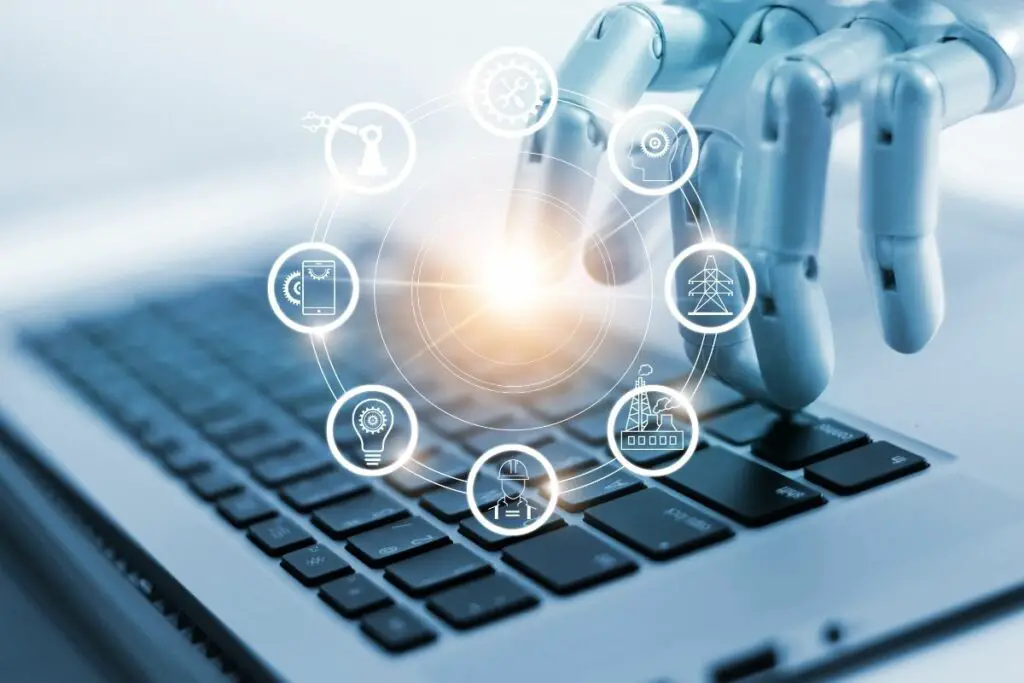Artificial Intelligence (more commonly referred to as AI) has become a hot topic in recent years. The term refers to intelligent machines that perform tasks usually done by humans.
In other words, AI is software or hardware that mimics human intelligence.

AI is already being used in many industries today, from self-driving cars to medical diagnoses. Experts predict that AI will soon take over jobs such as customer service and marketing.
AI is becoming more powerful every day. As a result, it’s now possible to create robots that can recognize objects and even speak.
This means that we’re entering a new era where computers will start to think like us. But what exactly is AI, and how does it work?
If you want to learn more about artificial intelligence and its applications in the real world, then you’ve come to the right place!
This article will take you through all you need to know about AI, from how it works to how it’s already being used to transform our everyday lives. So let’s get started!
So What Is AI?
First, let’s take a look at what exactly artificial intelligence is. As mentioned before, AI refers to software (and machines that use it) that attempts to replicate and mimic human intelligence.
However, there’s a lot more to AI than just this, and it’s hard to pin down an exact definition.
In simple terms, AI is any system that uses data to make decisions. AI isn’t sentient, but it uses the data it receives to build up patterns, learn new data independently, and create an internal ‘logic’ that helps the computer to act with human-like rationality.
While sci-fi might portray AI as incredibly intelligent and sentient computers that are almost indistinguishable from a living being, the reality is much less glamorous.
In reality, most AI systems are highly specialized for a single purpose, take an incredible amount of code and programming to function, and are often restricted by the limitations of software.
AI isn’t human, and there isn’t any way to truly replicate human intelligence in a computer.
That’s not to say AI isn’t incredibly advanced, however, and AI is an amazing tool that has already been put to use in the real world with great success.
AI’s ability to learn new information and adapt independently holds great potential, and automating processes can be achieved without the need for constant observation or maintenance.
With so many applications, AI is sure to become an everyday part of life.
How Does AI Work?
But before we can get into some things AI is already being used for, how does it actually work? To understand that, we need to cover a couple of key concepts.
First, we have neural networks. These are complex mathematical models that simulate the brain and (more specifically) the neurons in your brain.
They’re made up of nodes that process information, and connections between them that allow the network to learn and interact with its environment.
Neural networks are one of the main ways that AI programs learn and process the vast amounts of information they’re given, and help the AI to improve itself by building algorithms automatically.
AI also uses machine learning. This is essentially a type of neural network that learns on its own.
Machine learning allows AI to pick up new skills and behaviors on its own, rather than having to be programmed manually.
It’s important to note that while these two technologies may seem similar, they’re very different.
Neural networks are designed to model the structure of the brain, whereas machine learning focuses on the behavior of the brain and particularly how it learns through repetition.
The final concept we’ll discuss is reinforcement learning. Reinforcement learning is when an AI program learns by trial and error.
Instead of teaching it to do something directly, it teaches itself by observing other programs and seeing which actions result in better outcomes.
For example, if you want to teach your AI to play chess, you could give it a set of rules and let it play against itself. If it makes a mistake, you’d correct it and then give it another chance.
After enough tries at this, the AI would eventually start to learn what moves lead to good results and what moves don’t.
What Is AI Used For?

So now that we’ve covered the basics of AI, we can dive right into some of the more interesting examples.
As we’ve already covered, AI doesn’t just exist in movies and video games anymore. There are whole industries built around AI and there are countless ways that AI is being used today. Some of these include:
Agriculture
AI has been used to predict growing patterns, automatically monitor and adjust crop conditions, and manage large greenhouses without the need for dozens of staff.
Healthcare
Hospitals use artificial intelligence to analyze data which it uses to streamline clinical workflows and automate administrative and diagnostic processes.
Gaming
Some games implement AI to create unique experiences and adaptive gameplay.
Procedurally generated games in particular use artificial intelligence to craft a cohesive and intelligent game design that adapts to the player’s actions.
Business
Many businesses use AI for a plethora of reasons.
These range from analyzing performance data and providing insight into what processes need improving, to automating processes and producing future business models to follow.
The possibilities for AI are endless, and its success in its implementation in various parts of our everyday life proves that AI is only going to get bigger as time goes on.
Final Thoughts
AI is an incredible concept that is already improving our lives. While there may never be true artificial intelligence that perfectly mimics human behavior, it’s clear that AI is here to stay.
So now you know a little more about what AI is, how it works, and some of the things it’s already being used for.
It might seem confusing at first, but by learning more about AI you’ll be sure to discover some impressive things about this amazing technology!








